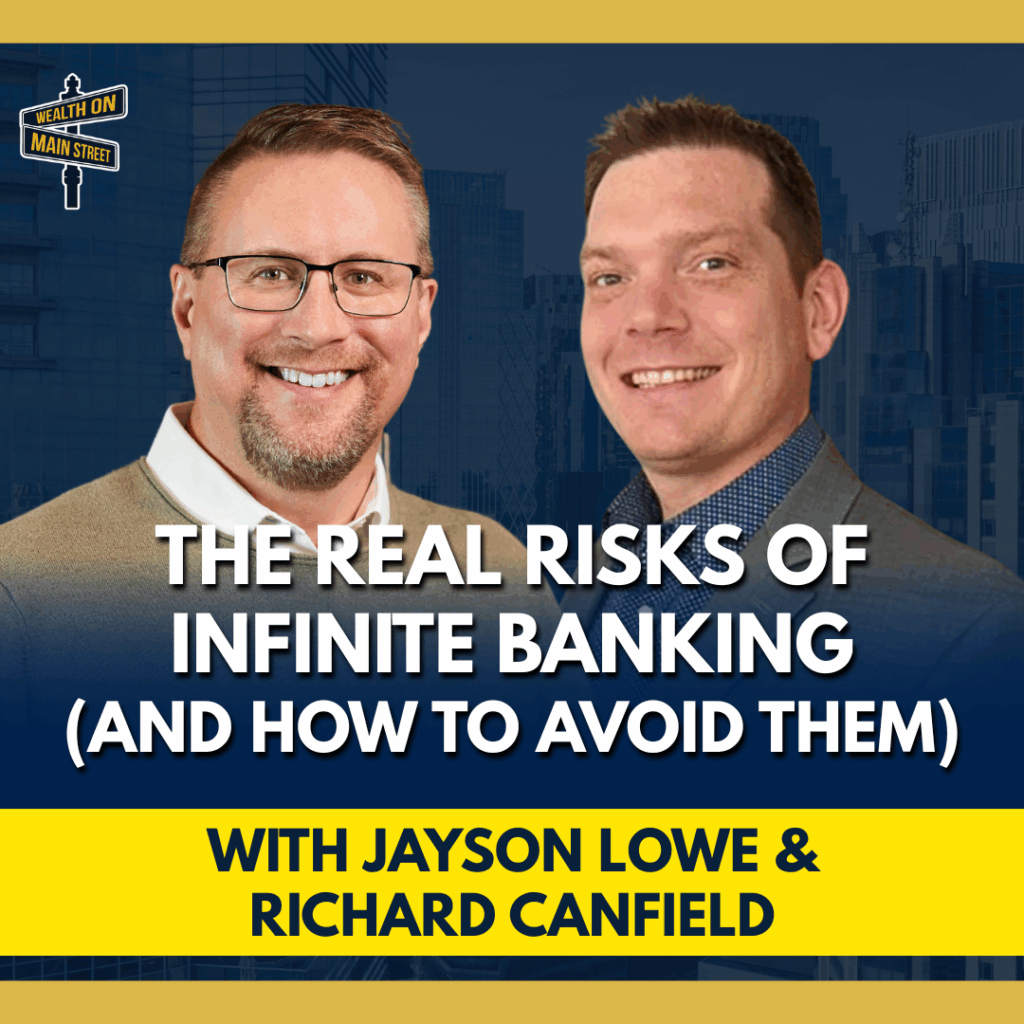
- Why we recorded this
- First principles
- The five dividend elections (and when they backfire)
- A simple, concrete illustration
- Nelson’s lesson (why this changed how many of us think)
- FAQ: fast answers to the questions we get the most
- Best-practice checklist (do this next)
- Want to see numbers for your policy?
- Resources we mentioned
- TL;DR (send this to your future self)
Why we recorded this
Elections show up everywhere: federal, state, provincial. However, today’s “election” is different. It’s your dividend election inside a participating whole life policy. It sounds boring. Frankly, it’s designed to be. Yet, the dividend choice you make quietly compounds for decades and affects your cash value, your death benefit, and even your taxes.
In short: don’t fix what isn’t broken. Mutual companies have used this system, with smoothing and discipline, for well over a century. As a result, the line on the chart looks… uneventful. And that’s the point.
First principles
- Participating policy = ownership. In a mutual company, there are no outside shareholders. Consequently, net income flows to participating policyowners partly as dividends and partly into owners’ equity (surplus) to strengthen the pool.
- Dividends aren’t guaranteed. The board must first declare them. Nevertheless, top mutuals have long histories of paying them.
- Smoothing matters. Some years are great, others are meh. Therefore, companies keep buffers so your long-term path stays steady, not spiky.
Think like an owner: when dividends are kept working inside the company, that capital can be redeployed, which may support future dividends for all participating owners including you.
The five dividend elections (and when they backfire)
You must choose one. You can usually change later, but changes can trigger consequences. Here’s the short, honest version.
1) Paid in Cash
You take the dividend as money out.
- Pro: Liquidity now.
- Cons: Typically taxable; no increase to death benefit or cash value; may reduce future dividend potential because the policy isn’t compounding on a larger base.
- Use sparingly. Cash is nice, but compounding is nicer.
2) Reduce Premium
Dividends offset your next premium.
- Pro: Lowers out-of-pocket costs.
- Cons: Also stalls growth; once dividends fully cover the premium, excess often pays out in cash (taxable). Meanwhile, your death benefit plateaus.
- Translation: Convenient now, smaller system later.
3) Dividends on Deposit
Dividends sit in a side account and earn interest.
- Pros: Simple, visible balance.
- Cons: Interest is taxable annually; growth sits outside the policy; the death benefit doesn’t rise.
- Bottom line: Feels safe, but it’s tax-inefficient and slows the engine.
4) Paid-Up Additions (PUAs) Our default for IBC
Dividends buy fully paid-up chunks of permanent insurance.
- Pros: Increases death benefit and cash value; every new dollar can earn its own future dividend; compounds quietly for decades.
- Cons: None, if your goal is long-term efficiency and control.
- Owner mindset: You’re plowing “profits” back into the business to grow the base that generates future profits.
5) Enhanced/Blended Option (Term + Auto-Convert)
Dividend first covers a term cost; any remainder converts the term to PUAs.
- Pros: Can maintain higher coverage now while gradually making it permanent.
- Cons: More moving parts; requires monitoring; not every company offers it.
- Niche use: When you must maintain a larger face amount while still wanting permanent growth over time.
A simple, concrete illustration
Imagine a mutual insurer reports $150M in net income. The board declares $75M for dividends and leaves $75M in owners’ equity.
- If policyowners take cash, money leaves the pool.
- If policyowners buy PUAs, the money stays working. Therefore, next year the company will have more capital employed, which can again support future dividends for the owners.
That’s why “boring” wins. It’s disciplined reinvestment.
Nelson’s lesson (why this changed how many of us think)
Nelson Nash (author of Becoming Your Own Banker) had an old State Farm policy. Early on, he elected Reduce Premium, which stunted growth in the most important years. Later, he switched to PUAs and watched the policy multiply over time, even after experimenting again by taking dividends in cash for a few years to prove a point (he literally saved the checks for audiences).
His takeaway was blunt: “If you don’t believe a check, there’s no helping you.”
Our takeaway is gentler: elect PUAs and let time work.
FAQ: fast answers to the questions we get the most
Q: Will PUAs always be the best choice?
A: For building an IBC-style system, yes in almost every case. However, cash needs or unique coverage needs can change the calculus. Even then, consider whether temporary cash convenience is worth the long-term compounding you’ll surrender.
Q: Can I change my election later?
A: Usually. However, switching to cash can trigger tax and, in some companies, can limit future PUA flexibility. Therefore, ask before you file the form.
Q: Do dividends reduce my COI (cost of insurance) when I pick PUAs?
A: Not directly. But PUAs increase policy size; consequently, future dividends are calculated on a larger base, which can overwhelm rising costs over time.
Q: Why does the dividend line look “flat”?
A: Because of smoothing. That’s intentional. Your policy should look reliable, not exciting.
Best-practice checklist (do this next)
- Elect PUAs as your default dividend option.
- Front-load your effort: If you can, pay flexible PUA premium early in the year. As a result, your year-end dividend is calculated on more capital for a longer period.
- Avoid “Reduce Premium” unless cash flow demands it, then revisit.
- Review once a year around your policy anniversary. Therefore, you catch changes early.
- Think like an owner. Ask: “Does this choice compound my system or consume it?”
Want to see numbers for your policy?
- If you’re a client: reply to your coach with “Dividend Election Review.” We’ll run a side-by-side showing Cash vs Reduce Premium vs Deposit vs PUAs for your exact contract.
- If you’re new here: book a 15-minute discovery call. We’ll explain how to align dividend elections with Infinite Banking principles, no pressure, just clarity.
Resources we mentioned
- Books:
- Don’t Spread the Wealth, family banking meetings and legacy structure
- Growing Your Own Capital: how PUAs power productive assets
- Cash Follows the Leader, multigenerational case study
- Related episode: How Dividends Are Set (with an Actuary), the behind-the-scenes boardroom view and smoothing explained.
TL;DR (send this to your future self)
- Dividends are declared, not guaranteed; yet mutuals have a strong track record.
- PUAs keep your capital compounding and your death benefit growing.
- Cash, Reduce Premium, and Deposit usually slow the system and can add tax.
- Boring is by design. Consequently, it’s reliable. Don’t fix what works.

